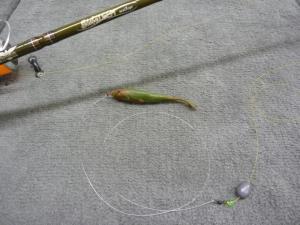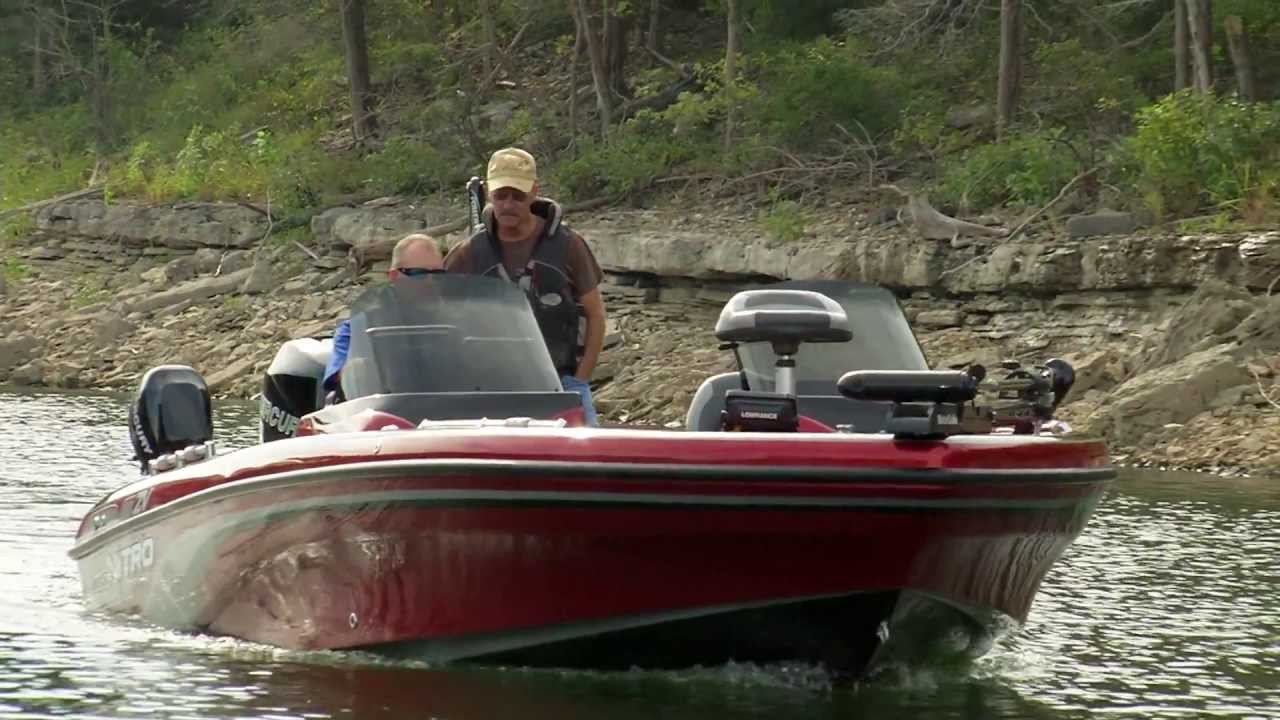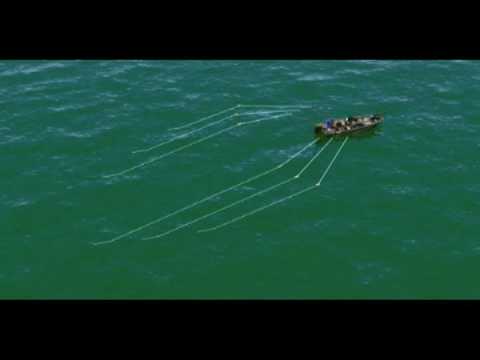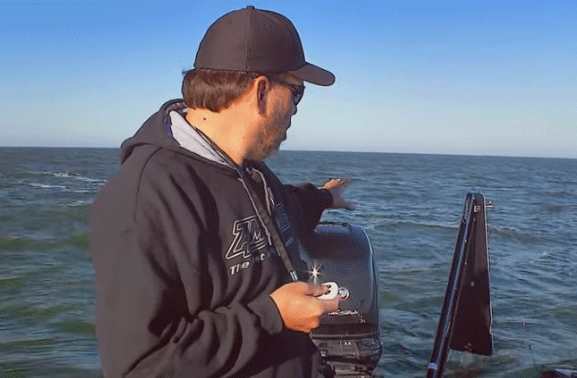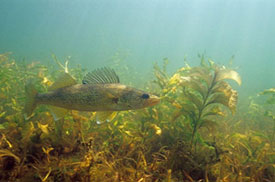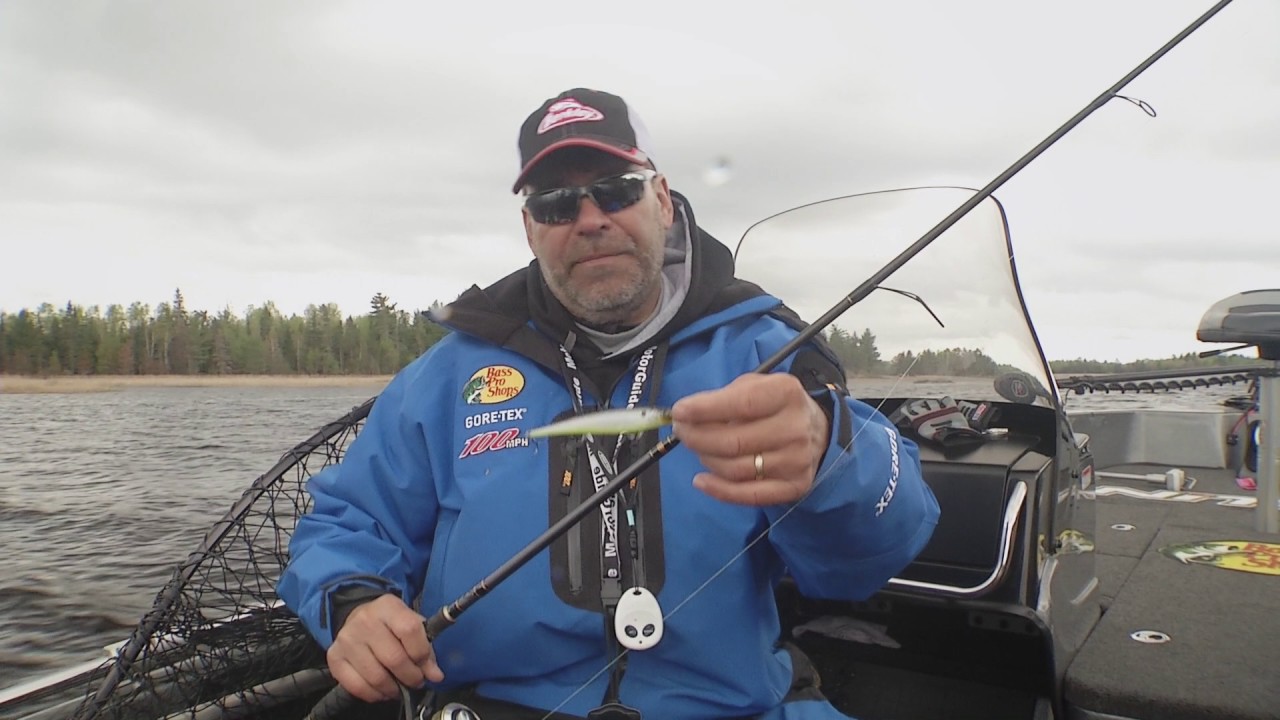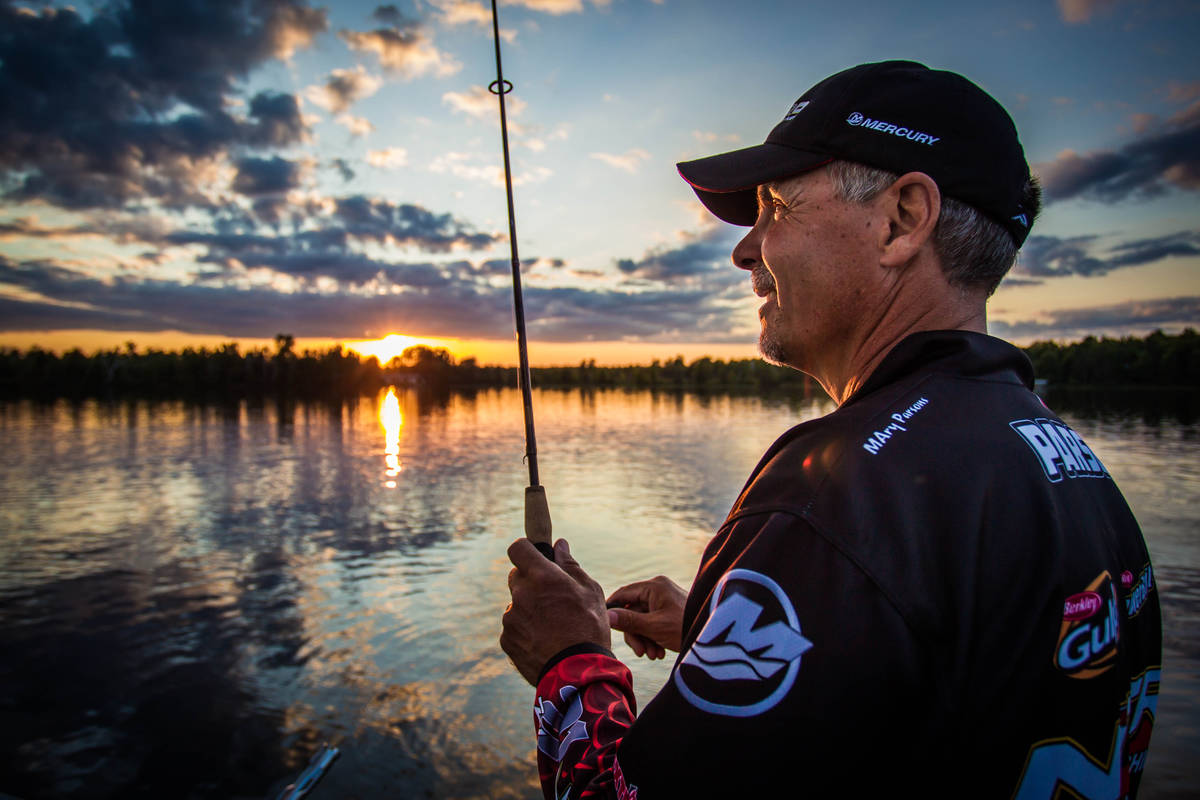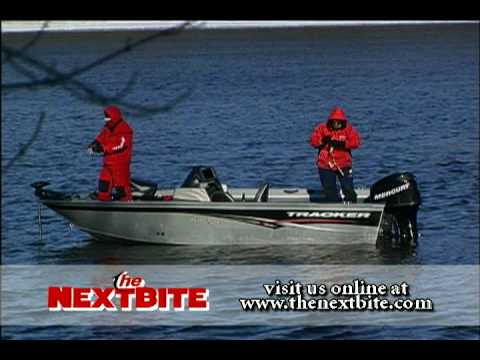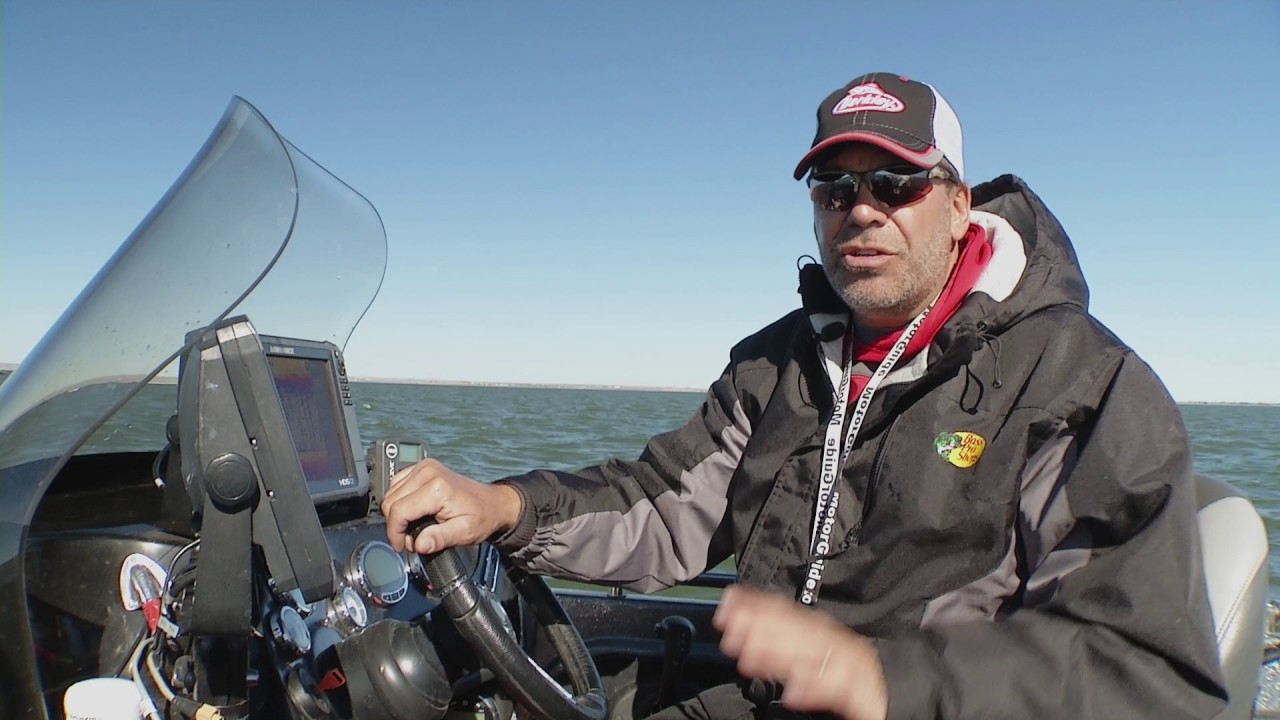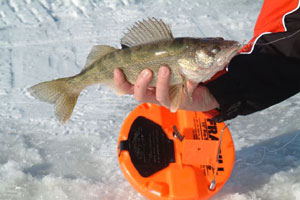 The common fishing tip-up is sometimes referred to as a fish trap. This simple set line approach to winter walleye angling has helped anglers catch countless walleye. Not only are tip-ups effective, they are simple to use and anyone serious about winter walleye fishing can afford to own several.
The common fishing tip-up is sometimes referred to as a fish trap. This simple set line approach to winter walleye angling has helped anglers catch countless walleye. Not only are tip-ups effective, they are simple to use and anyone serious about winter walleye fishing can afford to own several.
If tip-ups are a fish trap, it’s logical that the latest generation of hole covering tip-ups rate as a much better mouse trap. Using tip-ups that are designed to cover the ice hole is one of those ideas so simple, you wonder why it took so long to evolve. Not only do these tip-up styles work to keep the ice hole from freezing, they block light from entering the water and warning fish of potential danger.
Combine this with the fact that the trigger mechanisms are fool proof, they work in the coldest weather and several can be stored in a single bucket adds up to some good reasons this style of tip-up fishing has become so popular across the snow belt.
Total Solutions Technique
Tip-up fishing is a science of itself. Because the lines are set and then allowed to rest motionless until a fish is hooked, it’s critical they be positioned close to areas that routinely hold fish or in known walleye travel routes. The deep water edges of dead and decaying weed beds, submerged rock piles, meandering breaklines and other classic walleye structure are some of the best places to use tip-ups.
Using GPS coordinates collected from late fall walleye fishing adventures is a good place to start winter tip-up fishing. Walleye found in late fall will hang out in the same areas throughout most of the winter months. The high tech edge of GPS can eliminate a lot of the trial and error that normally is associated with tip-up fishing.
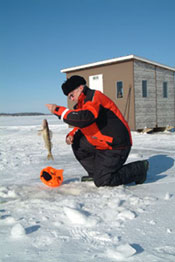 If you don’t have a GPS unit, get a good fishing map, a power auger and come prepared to cut a lot of holes while searching for the places walleye hang out in winter.
If you don’t have a GPS unit, get a good fishing map, a power auger and come prepared to cut a lot of holes while searching for the places walleye hang out in winter.
The more anglers who participate in the tip-up fishing strategy the better. Setting out the maximum number of tip-ups per angler allowed by law is the best way to blanket cover prime fishing areas.
Rigging a tip-up for walleye action is easy. On the spool use a vinyl coated type ice fishing line as the main line. This line is tough, easy to handle, no stretch and it doesn’t freeze. Attach the main line to a No. 10 barrel swivel and to the other end of the swivel add a six foot leader of eight or 10 pound test fluorocarbon leader material. At the terminal end use a No. 6 treble hook. About 12 inches up the line add just enough split shot to sink the bait to the desired depth.
The best bait for walleye tip-up fishing are hardy minnows that swim constantly. Fathead, emerald shiners, golden shiners and small suckers are all good choices. A minnow that two or three inches long is about right.
Hook the minnow lightly through the skin of the back in such a way that the minnow rides horizontal in the water and remains active. If the minnow dies, replace it immediately with a live minnow.
Total Solutions Equipment
The ideal main line for walleye tip-up fishing is Berkley’s Trilene Tracer Braid Professional Grade in 30 pound test. Because this line is smooth and round it doesn’t soak up water or freeze like other lines. Easy to handle and easy to see against a snowy background, nothing works better on tip-ups.
At the terminal end, an ultra low visibility line like fluorocarbon is essential. Not only is fluorocarbon invisible in the water, it’s also very tough and the ideal leader material for a wealth of walleye fishing situations.
A length of six or eight feet is plenty for a tip-up leader. Berkley Trilene 100% Fluorocarbonin eight or 10 pound test is the ideal leader material for fishing tip-ups.
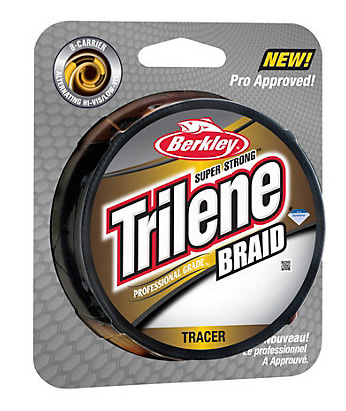
Berkley’s Trilene Tracer Braid Professional Grade |

Berkley Trilene 100% Fluorocarbon |

